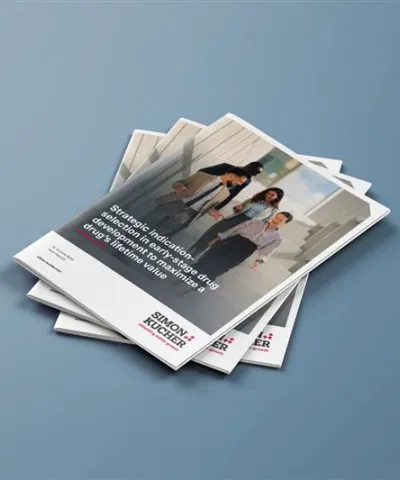Equipment sales have long been a cornerstone of industrial business models. But what if the real value isn’t in the sale, it’s in the outcome?
That’s the promise of Equipment as a Service (EaaS): a shift from selling machines to delivering performance. Customers pay not to own equipment, but to use it: flexibly, efficiently, and often with guaranteed results. For providers, it means longer-term revenue, tighter customer relationships, and access to entirely new segments.
Unlike traditional leasing, EaaS isn’t just a financial arrangement. It’s a commercial strategy that links usage, data, and service – and redefines how value is created and shared. And while the model is gaining global traction, its adoption looks very different across markets.
In the US, EaaS is increasingly seen as a way to unlock growth and improve capital efficiency. In Europe, it’s more often a response to risk, regulation, and sophisticated customer expectations. Both paths lead to the same idea, but with different starting points.
One model, two realities
While the core logic of EaaS is universal – turning Capex into Opex and product sales into service relationships – the way it’s applied is anything but.
“In the US, there’s a strong focus on growth and valuation,” says Adam Echter. “EaaS is seen as a financial unlock. Recurring revenue is more attractive to investors, and the technology now supports more flexible models”
In Europe, the picture is more nuanced. “EaaS adoption tends to be slower, but deeper,” explains Pantaley Dimitrov. “There’s more scrutiny from customers and regulators. The commercial model needs to be bulletproof. But once in place, it tends to stick”.
These market differences shape everything from pricing strategies to customer onboarding. Success in one geography doesn’t automatically translate to another.
Capex vs. Opex: Who gains, who doesn’t
At the heart of EaaS is a shift in how businesses think about value.
If you're using a €1 million machine every day to generate €10 million in output, ownership makes sense. The economics are clear, and the return justifies the capital outlay. But for many businesses, that's not the case. Equipment may sit idle for long periods or require ongoing maintenance despite low utilization, turning fixed assets into sunk costs.
In these scenarios, EaaS offers a more flexible, lower-risk alternative. It allows businesses to access the equipment they need without tying up capital, paying only for what they use, when they use it.
“The people who want EaaS fastest are often the ones who don’t use the asset every day,” says Echter. “For them, it’s about removing the burden, not just spreading cost”.
However, this flexibility also introduces risk for equipment providers. If customers pay purely on usage, a rarely used asset could leave the provider with little or no revenue. Avoiding this common pitfall means careful offer design: balancing customer flexibility with appropriate guardrails, such as minimum usage levels, clearly defined service commitments, or outcome-based agreements, to ensure value is shared sustainably.
Ultimately, it’s not just about customers gaining flexibility.. For providers, EaaS unlocks new markets: customers who wouldn’t justify full ownership but are ready to pay for usage or outcomes. That’s a commercial growth story with real traction: one that extends reach, deepens relationships, and builds more predictable revenue over time.
Why now? Three forces converging
Policy and market pressure
The recently passed US industrial legislation is part of a wider global shift. Governments and industries are aligning around smarter asset use, lower emissions, and more efficient capital deployment. Equipment as a Service fits naturally into this agenda: enabling access to high-performance equipment without large upfront investments, and supporting sustainability goals through shared, optimized usage.
Technology finally delivers
What once felt theoretical is now fully operational. Advances in telemetry, data analytics, and IoT mean equipment usage can be monitored in real time, performance tracked, and maintenance needs predicted. This visibility is essential, not just for billing accurately, but for building trust, ensuring uptime, and improving outcomes over time.
Investor logic
Service-based business models are consistently valued more highly than traditional equipment sales. Recurring revenue streams offer predictability, tighter customer relationships, and improved long-term margins. For providers, this creates a powerful incentive to rethink commercial models: not just to grow, but to increase enterprise value.
Combined, these forces are making EaaS more feasible, more attractive, and more urgent than ever. For many companies, the question is no longer if — but how soon.
The hard part: it’s complex by design
There’s no shortcut to success. EaaS requires a different mindset and a different commercial architecture. “You need to redesign pricing, contracts, SLAs, even your service operations,” Dimitrov cautions. “And if you’ve never done it before, there are a lot of ways to get it wrong”.
Common pitfalls include underestimating service costs, misaligning incentives, or offering unclear value propositions. Some companies tried to launch EaaS models years ago and failed, often because the ecosystem wasn’t ready. But today, that’s changed. The tools are better. The context is more supportive. And customer expectations are evolving fast.
Still, success depends on getting the design right and learning from those who’ve done it before.
So, is EaaS right for you?
EaaS isn’t the answer for every business. But for companies serving customers with variable demand, capital constraints, or a desire for outcome-based models, it’s becoming harder to ignore.
It’s not just about flexibility, it’s about growth. And in an era where customers want agility, and investors want predictability, EaaS offers both.
Curious about where EaaS fits in your strategy? Let’s talk. Whether you’re starting fresh or revisiting a past attempt, we can help you design a model that works – commercially, operationally, and globally.
Explore all the insights from our B2B Masterclass
Unlock practical strategies in B2B pricing, sales, and marketing








